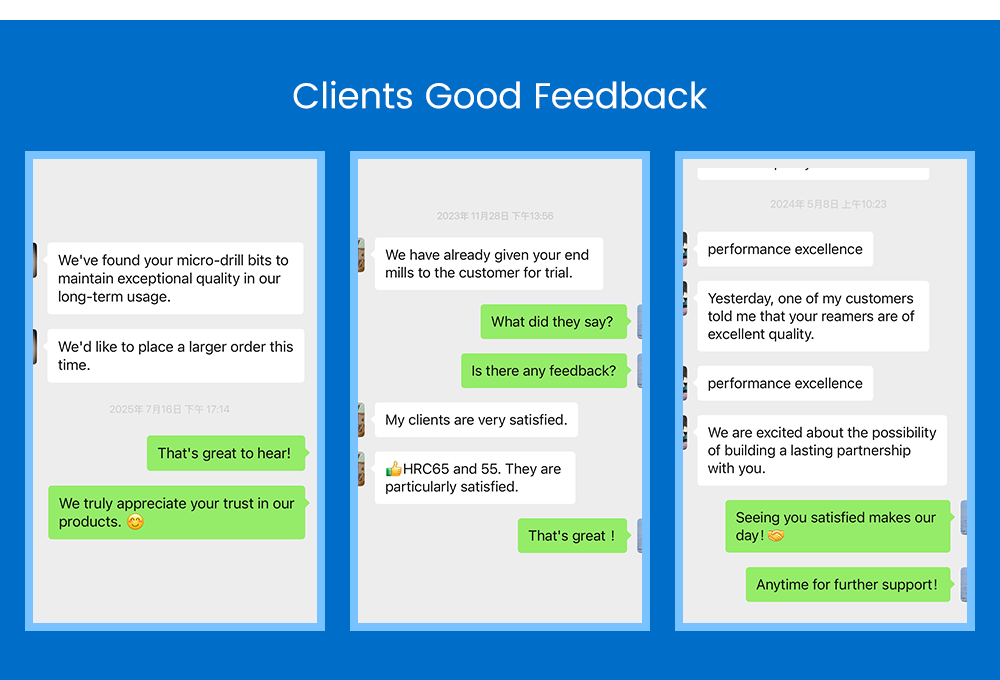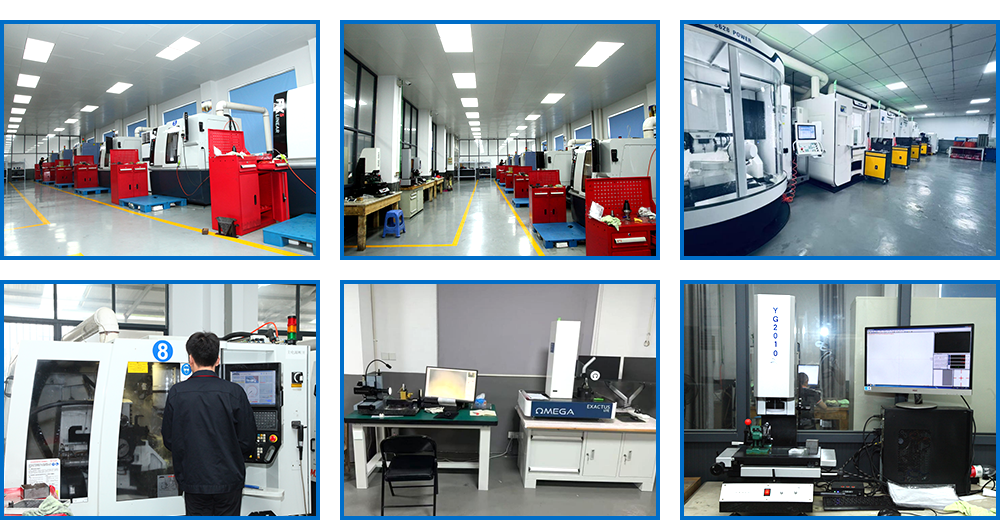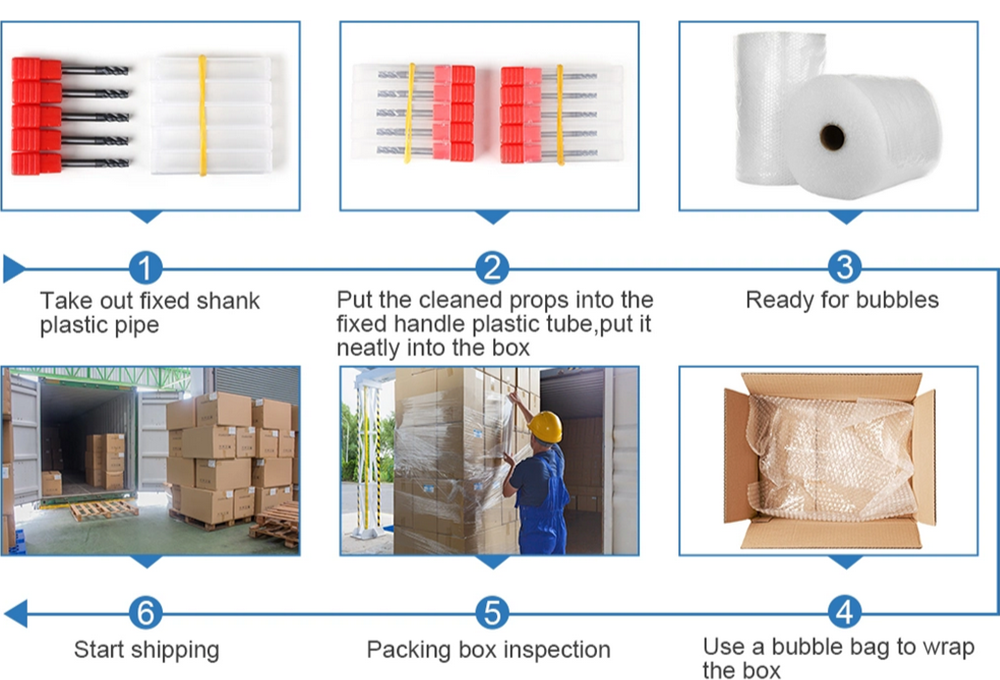English
- All
- Product Name
- Product Keyword
- Product Model
- Product Summary
- Product Description
- Multi Field Search
| SKU: | |
|---|---|
| Availability: | |
| Quantity: | |
HRC58 Carbide End Mills
Push machining boundaries with SUPSTTED's HRC58 End Mills – engineered not just for hardness, but for predictable dominance in challenging materials. Forget generic tooling; this is precision redefined for hardened steels, titanium alloys, and superalloys demanding absolute reliability.

Core Innovations:
Micro-Edge Architectur: Our proprietary edge preparation goes beyond standard honing. It incorporates a nano-scale stabilization layer, significantly reducing micro-chipping during high-feed engagements in hardened workpieces (HRC 50-62), translating to exceptional edge integrity and consistent finish quality, pass after pass.
Variable Core Resilience: Strategically varying core density along the flute length optimizes harmonic dampening. This SilentCore Technology minimizes chatter and vibration at critical engagement depths, enabling higher effective metal removal rates (MRR) in demanding pockets and deep cavities where others falter.
Patented Helix Synergy: A dynamically optimized variable helix angle isn't just about chip evacuation. Our geometry actively manages cutting forces and thermal buildup specific to the HRC58+ range, reducing localized heat spikes that degrade tool life. Experience smoother cutting action and extended tool longevity.
ADX Coating (Advanced Diamond Xeno-Composite): Beyond standard AlTiN, ADX integrates ultra-dispersed diamond-like carbon (DLC) phases within a ceramic matrix. This unique composition delivers unmatched abrasion resistance against hardened material abrasives while maintaining extreme oxidation resistance (stable up to 1100°C), drastically reducing flank wear and built-up edge (BUE).
Thermal Fatigue Shield: The substrate alloy features a proprietary grain boundary engineering process, dramatically enhancing resistance to thermal cycling fatigue – the primary failure mode in interrupted cuts common in hardened tool and die work. Expect exceptional resilience in demanding, variable-cut conditions.
Engineered for Your Ambition:
Predictable Performance: Achieve consistent finishes (Ra < 0.4 µm achievable) and dimensional accuracy, critical for aerospace components, medical implants, and high-precision injection molds.
Uncompromised Tool Life: ADX coating combined with Micro-Edge Architecture delivers up to 40% longer life in continuous and interrupted cuts compared to conventional HRC55-rated end mills, validated in independent high-pressure coolant testing.
Enhanced Process Security: SilentCore Technology™ minimizes harmonics, reducing the risk of catastrophic tool failure and protecting expensive workpieces during unattended machining of high-value parts.
Sustainable Productivity: Reduced scrap rates, fewer tool changes, and optimized machining parameters lower overall cost-per-part and environmental impact.
SUPSTTED HRC58 End Mills: More than just hardness rated. They are a systematic solution for conquering the most unforgiving materials with unprecedented precision, reliability, and efficiency. Demand predictable results. Demand SUPSTTED.
Show Details

Specitications
| SIZES(D*fL*sD*L) | |
| D1*3*D4*50L | D5*(13/20/25)*D5*(50/75/100)L |
| D1.5*4.5*D4*50L | D6*(15/24/30)*D6*(50/75/100)L |
| D2*6*D4*50L | D8*(20/30/35)*D8*(50/75/100)L |
| D2.5*7.5*D4*50L | D10*(25/40)*D10*(75/100)L |
| D3*9*D4*50L | D12*(30/45)*D12*(75/100)L |
| D3*(9/12/15)*D3*(50/75/100)L | D14/D16/D18/D20/D25*100L |
| D4*(10/16/20)*D4*(50/75/100)L | D6/D8/D10/D12/D14/D16/D18/D20*150L |
Clients Good Feedback

Factory

Service Introduction

Logistics Package

FAQ
Q1: What materials are HRC58 end mills designed to machine?
A: HRC58 end mills are specifically engineered for machining hardened steels in the range of approximately 45-58 HRC (Rockwell Hardness C scale). Common applications include tool steels (like H13, D2, A2), die steels, certain high-strength alloy steels, and case-hardened components.
Q2: What materials are HRC58 end mills designed to machine?
A: HRC58 end mills are specifically engineered for machining hardened steels in the range of approximately 45-58 HRC (Rockwell Hardness C scale). Common applications include tool stee
ls (like H13, D2, A2), die steels, certain high-strength alloy steels, and case-hardened components.
Q3: What is the main advantage of using an HRC58 end mill over a standard end mill?
A: The primary advantage is superior wear resistance and heat resistance at high hardness levels. These end mills utilize specialized carbide substrates, advanced geometries (like variable helix/pitch), and wear-resistant coatings (like AlTiN, AlCrN, or nano-composites) that maintain their cutting edge integrity when machining challenging hardened steels, significantly outperforming standard end mills which would dull rapidly or fail.
Q4: Can HRC58 end mills also be used on softer materials?
A: While technically possible, it's generally not recommended or efficient. HRC58 end mills are optimized for high hardness and often have geometries/coatings prioritizing strength and heat resistance over the sharpness and free-cutting characteristics ideal for softer materials like aluminum or mild steel. Using them on softer materials can lead to poor chip evacuation, increased cutting forces, suboptimal surface finish, and unnecessary wear on the tool. Use tools designed for the specific material hardness for best results.
Q5: How do speeds and feeds for HRC58 end mills compare to machining softer steels?
A: Speeds and feeds need to be significantly reduced compared to machining softer materials. Hardened steel requires lower cutting speeds (SFM) to manage heat generation and prevent premature tool wear. Feeds (IPT) are also typically lower to control cutting forces. Always start with the manufacturer's recommended parameters for the specific tool diameter, material hardness, operation (slotting, profiling), and setup rigidity, and adjust based on performance, tool life, and machine capability.
Q6: What factors are most important when selecting an HRC58 end mill?
A: Key selection factors include:
Geometry: Choose a geometry optimized for hard milling (e.g., variable helix/pitch to reduce chatter, strong core for rigidity, specific rake angles).
Coating: Select a high-performance coating like AlTiN, AlTiCrN, AlCrN, or Si-based nano-composites for maximum heat and wear resistance.
Flute Count: Fewer flutes (e.g., 4 flutes are common) provide greater core strength and chip clearance for slotting in hard materials. More flutes might be used for light finishing.
Application: Consider the specific operation (roughing, semi-finishing, finishing, slotting, profiling) as tool designs vary.
Rigidity: Ensure your machine tool and setup are sufficiently rigid to handle the cutting forces involved in hard milling.
HRC58 Carbide End Mills
Push machining boundaries with SUPSTTED's HRC58 End Mills – engineered not just for hardness, but for predictable dominance in challenging materials. Forget generic tooling; this is precision redefined for hardened steels, titanium alloys, and superalloys demanding absolute reliability.

Core Innovations:
Micro-Edge Architectur: Our proprietary edge preparation goes beyond standard honing. It incorporates a nano-scale stabilization layer, significantly reducing micro-chipping during high-feed engagements in hardened workpieces (HRC 50-62), translating to exceptional edge integrity and consistent finish quality, pass after pass.
Variable Core Resilience: Strategically varying core density along the flute length optimizes harmonic dampening. This SilentCore Technology minimizes chatter and vibration at critical engagement depths, enabling higher effective metal removal rates (MRR) in demanding pockets and deep cavities where others falter.
Patented Helix Synergy: A dynamically optimized variable helix angle isn't just about chip evacuation. Our geometry actively manages cutting forces and thermal buildup specific to the HRC58+ range, reducing localized heat spikes that degrade tool life. Experience smoother cutting action and extended tool longevity.
ADX Coating (Advanced Diamond Xeno-Composite): Beyond standard AlTiN, ADX integrates ultra-dispersed diamond-like carbon (DLC) phases within a ceramic matrix. This unique composition delivers unmatched abrasion resistance against hardened material abrasives while maintaining extreme oxidation resistance (stable up to 1100°C), drastically reducing flank wear and built-up edge (BUE).
Thermal Fatigue Shield: The substrate alloy features a proprietary grain boundary engineering process, dramatically enhancing resistance to thermal cycling fatigue – the primary failure mode in interrupted cuts common in hardened tool and die work. Expect exceptional resilience in demanding, variable-cut conditions.
Engineered for Your Ambition:
Predictable Performance: Achieve consistent finishes (Ra < 0.4 µm achievable) and dimensional accuracy, critical for aerospace components, medical implants, and high-precision injection molds.
Uncompromised Tool Life: ADX coating combined with Micro-Edge Architecture delivers up to 40% longer life in continuous and interrupted cuts compared to conventional HRC55-rated end mills, validated in independent high-pressure coolant testing.
Enhanced Process Security: SilentCore Technology™ minimizes harmonics, reducing the risk of catastrophic tool failure and protecting expensive workpieces during unattended machining of high-value parts.
Sustainable Productivity: Reduced scrap rates, fewer tool changes, and optimized machining parameters lower overall cost-per-part and environmental impact.
SUPSTTED HRC58 End Mills: More than just hardness rated. They are a systematic solution for conquering the most unforgiving materials with unprecedented precision, reliability, and efficiency. Demand predictable results. Demand SUPSTTED.
Show Details

Specitications
| SIZES(D*fL*sD*L) | |
| D1*3*D4*50L | D5*(13/20/25)*D5*(50/75/100)L |
| D1.5*4.5*D4*50L | D6*(15/24/30)*D6*(50/75/100)L |
| D2*6*D4*50L | D8*(20/30/35)*D8*(50/75/100)L |
| D2.5*7.5*D4*50L | D10*(25/40)*D10*(75/100)L |
| D3*9*D4*50L | D12*(30/45)*D12*(75/100)L |
| D3*(9/12/15)*D3*(50/75/100)L | D14/D16/D18/D20/D25*100L |
| D4*(10/16/20)*D4*(50/75/100)L | D6/D8/D10/D12/D14/D16/D18/D20*150L |
Clients Good Feedback

Factory

Service Introduction

Logistics Package

FAQ
Q1: What materials are HRC58 end mills designed to machine?
A: HRC58 end mills are specifically engineered for machining hardened steels in the range of approximately 45-58 HRC (Rockwell Hardness C scale). Common applications include tool steels (like H13, D2, A2), die steels, certain high-strength alloy steels, and case-hardened components.
Q2: What materials are HRC58 end mills designed to machine?
A: HRC58 end mills are specifically engineered for machining hardened steels in the range of approximately 45-58 HRC (Rockwell Hardness C scale). Common applications include tool stee
ls (like H13, D2, A2), die steels, certain high-strength alloy steels, and case-hardened components.
Q3: What is the main advantage of using an HRC58 end mill over a standard end mill?
A: The primary advantage is superior wear resistance and heat resistance at high hardness levels. These end mills utilize specialized carbide substrates, advanced geometries (like variable helix/pitch), and wear-resistant coatings (like AlTiN, AlCrN, or nano-composites) that maintain their cutting edge integrity when machining challenging hardened steels, significantly outperforming standard end mills which would dull rapidly or fail.
Q4: Can HRC58 end mills also be used on softer materials?
A: While technically possible, it's generally not recommended or efficient. HRC58 end mills are optimized for high hardness and often have geometries/coatings prioritizing strength and heat resistance over the sharpness and free-cutting characteristics ideal for softer materials like aluminum or mild steel. Using them on softer materials can lead to poor chip evacuation, increased cutting forces, suboptimal surface finish, and unnecessary wear on the tool. Use tools designed for the specific material hardness for best results.
Q5: How do speeds and feeds for HRC58 end mills compare to machining softer steels?
A: Speeds and feeds need to be significantly reduced compared to machining softer materials. Hardened steel requires lower cutting speeds (SFM) to manage heat generation and prevent premature tool wear. Feeds (IPT) are also typically lower to control cutting forces. Always start with the manufacturer's recommended parameters for the specific tool diameter, material hardness, operation (slotting, profiling), and setup rigidity, and adjust based on performance, tool life, and machine capability.
Q6: What factors are most important when selecting an HRC58 end mill?
A: Key selection factors include:
Geometry: Choose a geometry optimized for hard milling (e.g., variable helix/pitch to reduce chatter, strong core for rigidity, specific rake angles).
Coating: Select a high-performance coating like AlTiN, AlTiCrN, AlCrN, or Si-based nano-composites for maximum heat and wear resistance.
Flute Count: Fewer flutes (e.g., 4 flutes are common) provide greater core strength and chip clearance for slotting in hard materials. More flutes might be used for light finishing.
Application: Consider the specific operation (roughing, semi-finishing, finishing, slotting, profiling) as tool designs vary.
Rigidity: Ensure your machine tool and setup are sufficiently rigid to handle the cutting forces involved in hard milling.
content is empty!